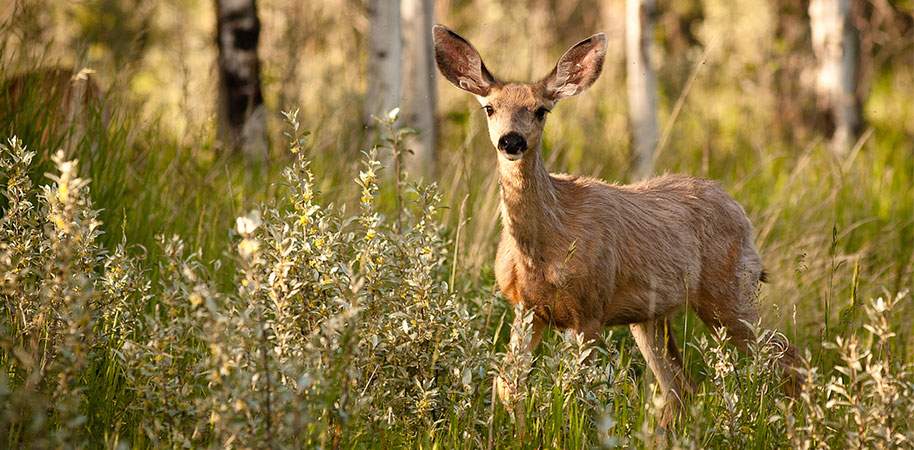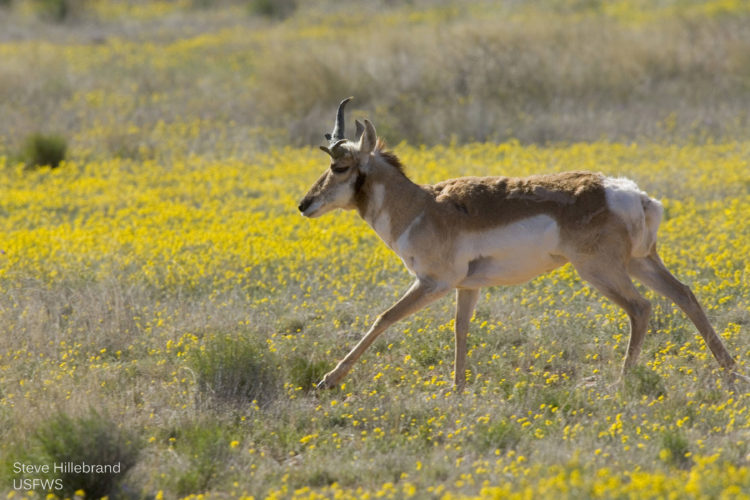We have much more to do and your continued support is needed now more than ever.
WANTED: Fugitive Emissions

Despite a recent Supreme Court-ordered delay of the Clean Power Plan, efforts to protect wildlife and reduce the greenhouse gas (GHG) emissions that cause climate change are continuing to move forward. On April 22, the Bureau of Land Management (BLM) will be accepting the last public comments on a new proposed rule to regulate methane waste from oil and gas operations on public lands.
Most human-caused methane waste in the U.S. comes from natural gas and oil extraction sites. These emissions, called “fugitive emissions” by industry insiders, either leak unintentionally or are purposefully released as a byproduct of production. Methane is the primary component of natural gas; since natural gas is often found alongside oil, both oil and natural gas extraction release this harmful greenhouse gas.

The methane that is lost at oil and gas extraction sites is an important resource that could be captured and used to generate electricity. According to Interior Secretary Jewell, between the years of 2009 and 2014 enough natural gas was wasted through venting, flaring and leaks to power more than five million homes for a year.
In addition to this, a recent report by ICF International found that the US has lost $330 million worth of natural gas in 2013 alone. The methane waste on federal and tribal lands account for 4% of total methane waste; to put this number in perspective, this loss could have powered over 4 million US homes. This waste is not helping our economy. Thankfully, the BLM’s proposed rules are a commonsense solution.
Methane Rules to Curb Waste
The BLM proposed new methane rules on January 22, 2016. The goal of this regulation is to curb methane waste from oil and gas drilling on public lands within the U.S. This executive action is part of the administration’s Strategy to Cut Methane Emissions, an important part of its larger Climate Action Plan. It follows up on an announcement last year by the Environmental Protection Agency to regulate all news sources of oil and gas development under the Clean Air Act.
While EPA’s proposed rules are directed at air pollution and focus on new and modified sources, the BLM’s proposal is directed at waste prevention and applies to new and existing sources on federal and tribal lands. The strategy aims to reduce oil and gas industry emissions by 40-45% from 2012 levels by 2025.

To date, many oil and gas companies “flare” methane released in the extraction process. This means that released gas is burned off at the extraction site before it is able to dissipate into the atmosphere. However, hydrogen sulfide, benzene, and other air pollutants are common secondary emissions of these flares. When companies do not flare the escaped gas, they “vent” methane at extraction cites, which allows this greenhouse gas to escape directly into the atmosphere.
Methane exists in the atmosphere for less time than carbon dioxide, however it has 80 times as much capacity to trap heat over a 20-year time frame, and 25 times as much capacity over a 100-year time frame. It is currently the second most common carbon pollutant, after carbon dioxide. In 2013, it was responsible for 10% of all human caused GHG emissions in the U.S. Climate change presents one of the greatest threats to wildlife today, threatening mass extinctions, habitat shift and loss, and ecosystem disruption.
The BLM’s new proposal would impose technology requirements to limit the amount of methane waste released at extraction sites. In addition to these requirements, the BLM’s proposed rule will allow for future increases in the amount of royalties owed by drilling companies using public lands and make the timeline for when these royalties are owed stricter.
The Risk of Methane
The dangers of methane waste were unfortunately highlighted by the massive leak that recently occurred in California. The Aliso Canyon methane leak captured national headlines and occurred for 112 days.
Massive amounts of natural gas containing methane spewed into the atmosphere from Aliso Canyon– approximately 100,000 thousand metric tons of methane. Thousands had to evacuate their homes. Locals complained of nosebleeds, headaches, and dizziness. We can only imagine how the sensitive wildlife in the surrounding area also suffered, unable to evacuate. Some news sites referred to it as the biggest environmental disaster since the Deepwater Horizon oil spill.
Act Now
Methane waste poses a threat on a global level as well as a local level. Climate change and its impacts on wildlife and habitat will become more severe as more methane and other GHGs are emitted. Finalizing this rule will help ensure a stable future for our wildlife and our country.
Take Action
Help us urge the BLM to finalize its rule by the end of 2016!





















